Hadhramaut: Encountering the Familiar in a Faraway Place
Senior Research Associate Cheryl-Ann Low travels with colleague Zahara Aljunied to visit the latter’s family in Hadhramaut, finding hospitality, familiarity and common ground.

Most Singaporean Arabs originated from, or had close family ties with, Hadhramaut1, located at the southern part of the Arabian Peninsula, in present-day Yemen. In March this year, my colleague Zahra Aljunied and I visited Hadhramaut with the purpose of finding materials alluding to the links between Hadhramaut and Southeast Asia, particularly Singapore.
Descended from Hadhramis Syed Mohammed Bin Harun Aljunied and his nephew Syed Omar Aljunied who came to Singapore via Palembang in the early 19th Century,2 Zahra’s family still has strong ties with Hadhramaut.
We went to Hadhramaut with Zahra’s father and his wife who were there to celebrate the festival of Prophet Mohammed’s birthday. For most of our time there, we put up at Uncle Aljunied’s house in Tarim, which has numerous mosques and is well known for its religious scholarship.3
Broken Roads to Date Palms
On 3 March, we boarded the plane at Sana’a in north Yemen for Seiyun, the town adjacent to Tarim. Due to foggy conditions and poor visibility at Seiyun, however, the flight was re-routed to land at Mukalla which was an approximately four-hour drive from Tarim. This drive introduced me to the landscape and climate of Hadhramaut.
The mountains and valleys formed a grand view which took my breath away even as the sun beat down through the car windows and had me croaking “ma’a!” (water) every so often. However, the broken roads we drove past marked the devastation left by the flash floods of October 2008.4 Amidst the broken roads and rebuilding projects, patches of green vegetation had started to grow.
Hadhramaut is an arid environment, isolated by desert and mountains from the rest of the Arabian Peninsula.5 It has several tributaries and oases of fertile agricultural land, and floodwater and ground water which were used for irrigation.6 In general, however, the environment is harsh and agriculture difficult due to the extreme heat of long summers, cold winter winds, and sparse, unreliable rainfall.7
During a visit to a Hadhrami gentleman, Zahra and I would come across a correspondence relating to the 1940s famine. A drought that started in 1943 (and lasted three years) caused harvest failures in Hadhramaut.8 The situation was exacerbated by the halting of monetary remittances from relatives in Malaya and Indonesia following the Japanese Occupation, hence leading to the loss of an important source of income to pay for food imports.9
It was evening as we neared Tarim; the mountainous views gave way to stretches of sandy roads punctuated by clusters of angular mud-brick buildings and groves of date palms. The car window framed these scenes, like a pretty series of tableaux as we passed. One could not help but marvel at the stark differences between the landscapes of Hadhramaut and tropical Southeast Asia, and it is no wonder that a Hadhrami migrant in Indonesia lauded in a poem the date palms of his homeland.10
The sun had set by the time we arrived at Uncle Aljunied’s house. As we entered the house and were warmly greeted by the womenfolk, Zahra managed to explain to me that we would seldom be using that entrance as the menfolk might be around that part of the house. The house was designed such that men and women could live separately from each other. Throughout my stay there, I saw Zahra’s gentlemen relatives only once – when we briefly exchanged greetings on the day of our arrival.
Hadhrami Hospitality – The Heart’s Welcome
In Tarim, Zahra was welcomed home with much glee and enthusiasm. Trailing tiredly behind her, I was surprised to be received in the same fashion by her family members – firmly clasped by my shoulders and greeted cheek to cheek, and greetings spoken in Arabic which I did not understand but recognised the warmth and welcome in the tone. I would soon encounter many more instances of hospitality imbued in the practices of Hadhramaut.
The next day, Zahra’s relatives came to visit during lunch. I joined the cheery gathering of women and children. Amidst the smiles and friendly gestures, it was hard not to feel at home despite not understanding the conversations. A strikingly beautiful lady who looked to be in her thirties came and spoke to me in simple English. I learned that she had picked up English from Zahra’s annual visits. After warmly welcoming me, she introduced me to her daughters and her grandchild. Girls in Hadhramaut typically marry quite young. When she found out that I did not have any children, she warmly wished for me to have them soon. This wish would be constantly repeated by women I met during my stay in Hadhramaut.
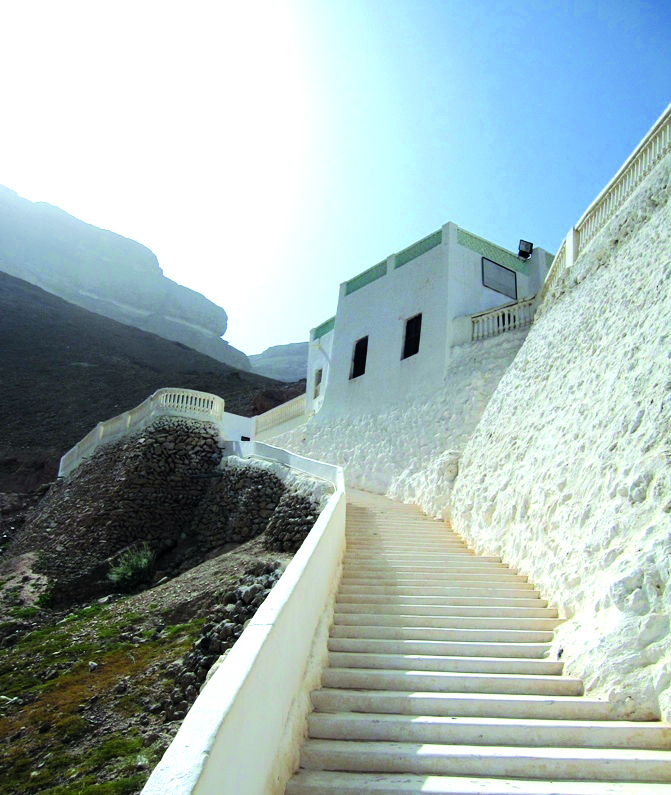
On 5 March, en route from Tarim to Seiyun, we visited the tomb of Ahmed bin Isa, known as al-Muhajir, “the Emigrant”, which stood on the hillside next to the road. The sada (plural for sayyid) trace the advent of their lineage in Hadhramaut to the arrival of Sayyid Ahmad bin Isa in Hadhramaut in the 10th century.11 The sada claim descent from Prophet Muhammad through the Prophet’s daughter and her husband ‘Ali b. Abi Talib.
As we descended the hill via the stairway, we observed a group of merry, laughing girls waving at us through a window of a building at the foot of the hill. They were a family spending a day out and our guide Ahmed Salem Blfakeeh urged us to say hello to them. As the group in the room was composed of ladies and young children, Ahmed waited outside, while we visited the group. A space was made for us to sit down next to the most senior lady in the group. While Zahra conversed with her in Arabic, she cast frequent smiles my way, and the other ladies and children would wander up with shy smiles on their faces. They served us sweet tea in small glasses, cakes and gilak seeds. Gilak seeds are somewhat similar to sunflower seeds. People there have an amazing way of enjoying these seeds. Popping one or two unshelled seeds between their teeth, they skilfully removed the kernels using only teeth and tongue. They invited me to try, which I did and failed.
Zahra turned to me and told me that the senior lady had enquired if I was married, to which I replied in the affirmative. She then asked if I had children. Informed that I did not, the lady exclaimed (Zahra translated for me): “Oh, poor you! Don’t you worry, we will pray for you to have children soon!” The family insisted that we stay and lunch with them. As we were due to be in Seiyun, we politely and regretfully declined while thanking them for their hospitality as we took our leave.
The Hadhrami hospitality I experienced went far beyond courtesy and friendliness. A Hadhrami welcomes the guest firmly into his or her house and care. On two occasions when we arrived in the evenings, our hosts invited us to stay the night.
One of these visits was to a family in the coastal town of Shihr, and took place on a Sunday. The daughter of the house was a schoolteacher and spoke some English. She was full of welcome, helping her mother to serve us sweet tea, ginger coffee, orange juice and cakes. She asked questions about our work and where we were from. Beaming broadly, she said that skies had darkened and insisted that we must stay with them for the night, adding that they would like us to stay until at least Wednesday. I learnt that it is customary for Hadhramis to invite guests who were in their houses in the evenings to stay overnight with them.
Another lively visit we had was with a family in Shibam. We sat with the wife of the host, his mother and his daughter in the room upstairs. They served us sweet tea, orange juice, cookies, nuts and melon seeds dyed in various hues. They thought I was from China, and Zahra helped me to explain that while my ancestors were from China, several generations of my family were born in Melaka, while I was born in Singapore. This started comparisons with how Zahra’s ancestors were from Tarim and she was also born in Singapore.
Despite the language barrier, we tried to communicate with each other. We talked about how beautiful Shibam was, told them that we also like to eat melon seeds in Singapore, and asked them how they coloured their melon seeds so attractively. The host’s daughter was in her early teens, and had a very friendly disposition. We both smiled immediately at each other when we met. At an awkward moment when we ran out of words, I started playing with the colourful melon seed kernels, arranging them into a pattern on the carpeted floor in front of me. The daughter was intrigued and smiled knowingly when she realised what I was trying to represent with the seed kernels – the colourful buildings of Shibam. In response, she arranged her melon seed kernels into a flower and looked at me with a huge grin.
After that, they showed us around their house; we happily scampered up the narrow stairways which opened out to small rooms, some of which were unoccupied. A UNESCO World Heritage site, Shibam is famous for its towers of tall houses and is also referred to as “the Manhattan of the desert”12 and “the New York of Hadhramaut”.13 The tallest house rises 29.15 metres above its entrance on street level, and the average number of storeys is five.14 We counted seven storeys in this house, atop of which was a cool, airy rooftop.
Spiced Rice, Sambal Belachan and Sarong
The food in Hadhramaut was extremely familiar. The Hadhramis who migrated to Southeast Asia and maintained close links with Hadhramaut introduced some of the dishes of the host country to the motherland. Thus, we had rice, sautéed vegetables and gravied meats similar to curry, accompanied by sambal belachan. Van der Meulen and von Wissman noted during their travel through Hadhramaut in 1931 that the cooking in Tarim and Seiyun was very much influenced by Singapore and Java.15 They further noted then that Javanese and Chinese were sought after as cooks and housekeepers in Hadhramaut.16 Just as they observed then the presence of dried or tinned foods imported from Java, I enjoyed keropok in Tarim which Zahra informed me was from Indonesia.
Van der Meulen and von Wissman were served yellow-coloured spiced rice with dishes of mutton and gravy. They deduced that the practice of spicing the rice and meat was introduced from Java and India.17 Like them, I also ate spiced rice. It tasted very much like nasi briyani to me.
There was one particularly unforgettable meal with spiced rice. This was a lunch we had at Do’an. We passed a truckload of camels as our car neared the eatery. Being women, Zahra and I were obliged to enter the eatery by a secondary entrance near the kitchen. On our way, our guide urged us to look down into the kitchen where we saw a man cooking a large pot of meat. The food we were served consisted of a platter of saffron-coloured spiced rice, a plate of camel meat and a dish of chilli sauce. Our guide explained that that was the eatery’s specialty, and the only food it served. I ate a lot of the rice with copious amounts of chilli sauce, focusing on how much it tasted like nasi briyani, and tried hard not to think about the camels and the kitchen outside. I chewed and swallowed some of the meat in great haste.
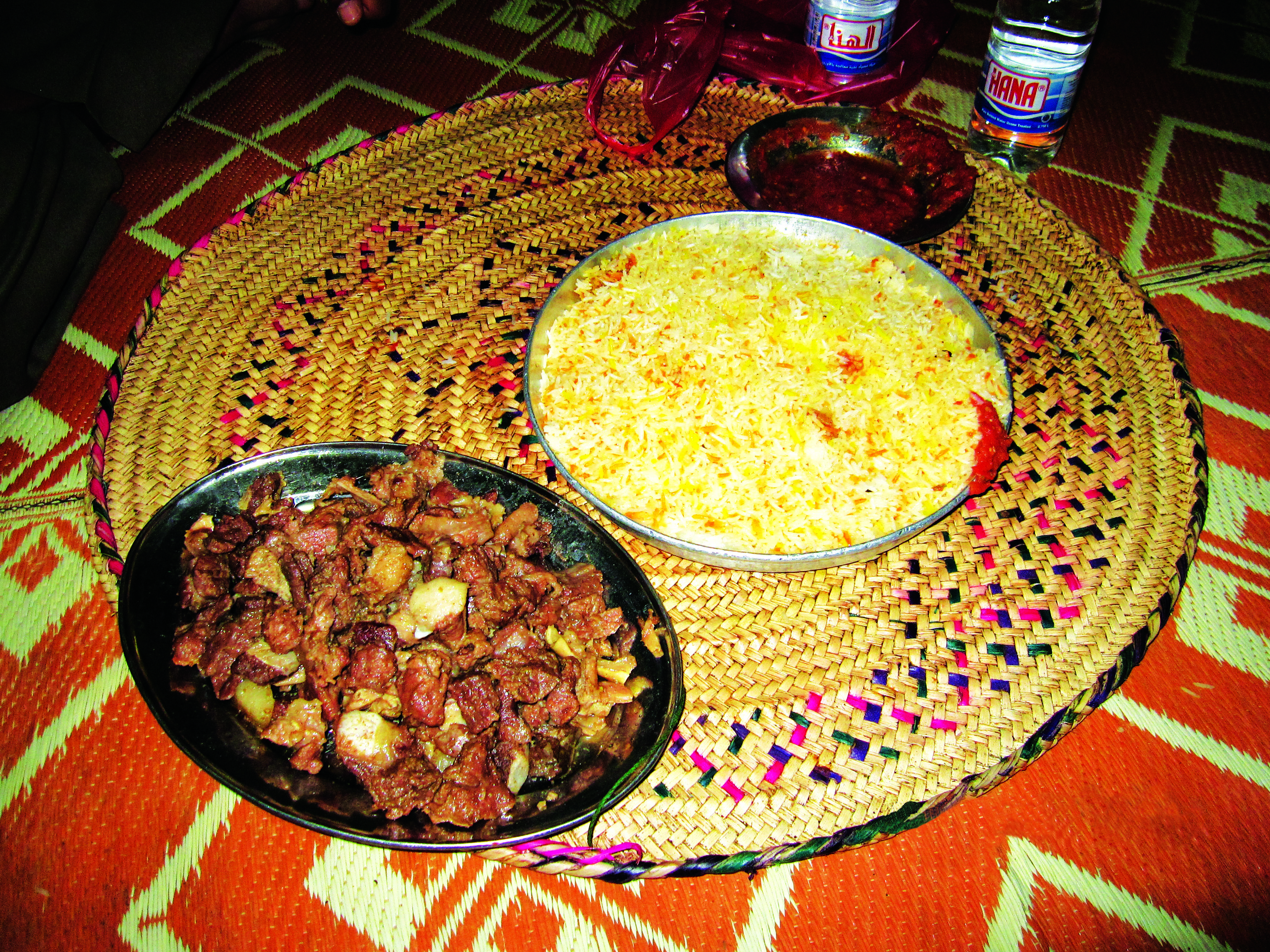
The food was not all that was familiar to me in Hadhramaut. It was common for men there to don sarongs and shirts. This was the preferred attire of our guide. Our gentle, kindly driver also regularly wore a shirt over a singlet, and a sarong. We were told that the singlet was called baju panas in Hadhramaut.
Treading Where Migrants Walked
On 8 and 9 March, we visited the port cities of Shihr and Mukalla. These are the two main ports from where Hadhramis migrated. Shihr was the main port until Mukalla superseded it in the late 19th century.18 These two ports are significant in the lives of the migrants not only because they were the places of departure. Some Hadhramis spent a year or more working in these cities to earn their onward fare, and those deciding on their migration destinations would talk to sailors and returned emigrants in these ports.19

We were taken on a walking tour of Shihr which included visiting the building which used to house the immigration offices. As we walked past the building, a briny aroma wafted by, bringing to mind images of the sea. Shortly after, some men came trundling by with a wheelbarrow filled with huge fish! The men told us through the guide that it was a fresh catch, and obligingly waited while we took photographs.
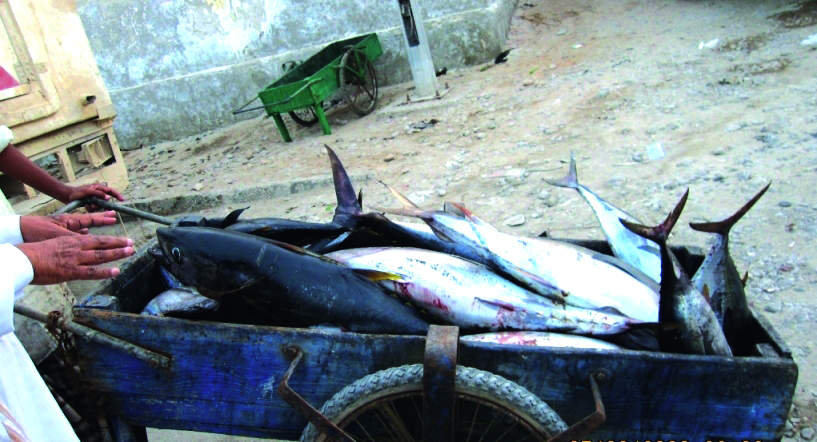
We visited Mukalla the next day. I was told it is the centre of Hadhramaut’s fishing industry. As I feasted on the delectable fish with rice at a restaurant with Zahra, our host and our guide, I wondered how many Hadhrami migrants, who passed through Shihr and Mukalla, had missed the briny smell of the sea and fresh fish of these ports while in their host countries. By then, I had been away from home for more than a week and was starting to miss our tropical landscape and balmy evenings.
Last Day in Hadhramaut
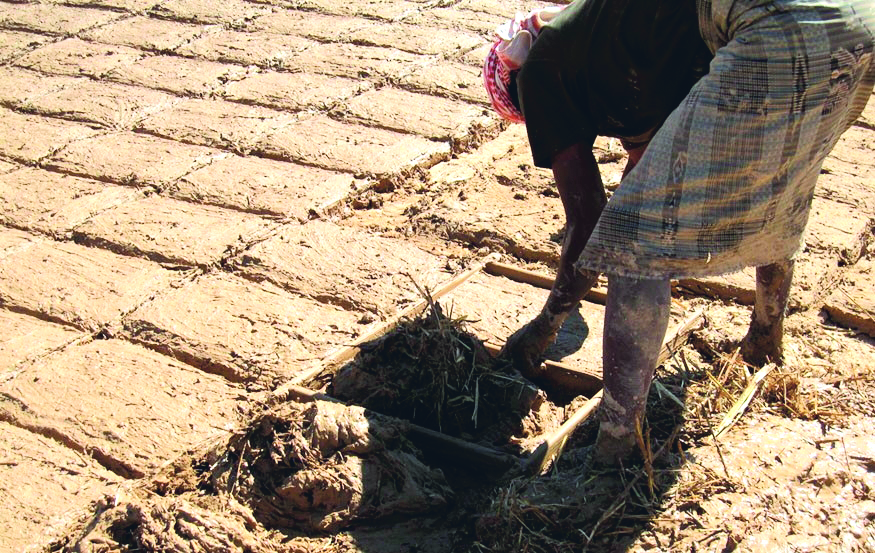
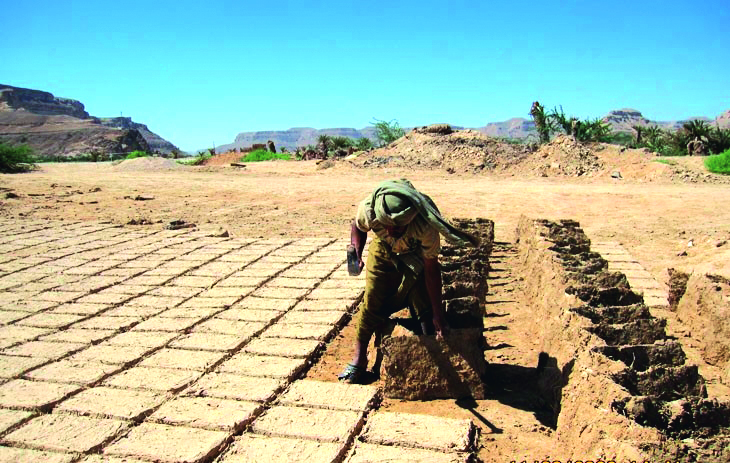
My last day in Hadhramaut was 12 March. As my flight was in the afternoon, we started the day by visiting a mud-brick factory. Buildings in Hadhramaut are traditionally constructed from mud-bricks and the centuries-old technology of making mud-bricks has remained largely unchanged.20 The mud-bricks are made in large outdoor yards. Soil is wetted and chopped straw is mixed in. The mixture is smoothed into a pre-wetted wooden mould, edges defined with a tool or finger, and the mould removed. The bricks are then sun-dried for about a week before they are ready for use.21 Although concrete buildings have sprung up in Hadhramaut, mud-brick structures continue to be built.
In the afternoon, I boarded the plane at Seiyun for Sana’a where I would spend two days before catching the homeward international flight back. By then, I had acquired some ability to communicate with kindred spirits who spoke a different language. I helped an over-laden lady carry her bag; she showed me how to get to the front of the crowd to board the plane. Together, we hurried on board and she negotiated for us to sit next to each other. Pointing and gesturing at the in-flight magazine, she recommended that I visit Socotra – a small archipelago of islands south of the Arabian Peninsula – the next time. The illustrations in the magazine showed it was a spectacular place with unique flora.
As the plane soared over the mountainous plateaus and values, I mused that I would have some interesting things to share with friends back home over a meal accompanied by sambal belachan.
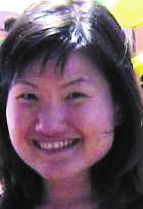
Senior Research Associate I
Lee Kong Chian Reference Library
National Library
REFERENCES
“58 Die in Flash Floods,” The Observer, 26 October 2008.
Camille Allaz, History of Air Cargo and Air Mail: From the 18th Century, trans. John Skilbeck (London: Christopher Folye Publishing in association with The International Air Cargo Association, 2004). (Call no. R 387.744 ALL)
C.M. Turnbull, A History of Singapore 1819–1988 (Singapore: Oxford University Press, 1989). (Call no. RSING 959.57 TUR)
Linda Boxberger, On the Edge of Empire – Hadhramawt, Emigration and the Indian Ocean 1880s–1930s (New York: State University of New York Press, 2002). (Call no. R 953 BOX)
“Old Walled City of Shibam,” UNESCO World Heritage website, http://whc.unesco.org/en/list/192.
“Operations Update,” International Federation of Red Cross and Red Crescent Societies, accessed July 2009.
Pamela Jermome, Giacomo Chiari and Caterina Borelli, “The Architecture of Mud: Construction and Repair Technology in the Hadhramaut Region of Yemen,” APT Bulletin 30, nos. 2–3 (1999), 39–48. Retrieved from JSTOR via NLB’s eResources website.
R.J. Gavin, Aden Under British rule 1839–1967 (London: C. Hurst & Co., 1979). (Call no. R 953.35 GAV)
Ronald Lewcock, Wadi Hadramawt and the Walled City of Shibam (Paris: UNESCO, 1986)
Ulrike Freitag, “Arab Merchants in Singapore: Attempt of a Collective Biography,” in in Transcending Borders: Arabs, Politics, Trade and Islam in Southeast Asia, ed. Huub de Jonge and Nico Kaptein (Leiden: KITLV Press, 2002), 109–42. (Call no. RSING 305.8927059 TRA)
NOTES
-
Ulrike Freitag, “Arab Merchants in Singapore: Attempt of a Collective Biography,” in Transcending Borders: Arabs, Politics, Trade and Islam in Southeast Asia, ed. Huub de Jonge and Nico Kaptein (Leiden: KITLV Press, 2002), 113–14. (Call no. RSING 305.8927059 TRA) ↩
-
C.M. Turnbull, A History of Singapore 1819–1988 (Singapore: Oxford University Press, 1989), 14. (Call no. RSING 959.57 TUR) ↩
-
Ulrike Freitag and William G. Clarence-Smith, eds., Hadhrami Traders, Scholars and Statesmen in the Indian Ocean, 1750s–1960s (Leiden: Brill, 1997), 67. (Call no. RSEA 304.809533 HAD) ↩
-
“58 Die in Flash Floods,” The Observer, 26 October 2008; “Yemen: Flash Floods,” International Federation of Red Cross and Red Crescent Societies, accessed July 2009. ↩
-
Linda Boxberger, On the Edge of Empire – Hadhramawt, Emigration and the Indian Ocean 1880s–1930s (New York: State University of New York Press, 2002), 1. (Call no. R 953 BOX) ↩
-
Boxberger, On the Edge of Empire, 13. ↩
-
Boxberger, On the Edge of Empire, 40. ↩
-
R. J. Gavin, Aden Under British rule 1839–1967 (London: C. Hurst & Co., 1979), 310 (Call no. R 953.35 GAV); Allaz, Camille, History of Air Cargo and Air Mail: From the 18th Century, trans. John Skilbeck (London: Christopher Folye Publishing in association with The International Air Cargo Association, 2004), 166. (Call no. R 387.744 ALL) ↩
-
Boxberger, On the Edge of Empire, 40. ↩
-
Boxberger, On the Edge of Empire, 44. ↩
-
Boxberger, On the Edge of Empire, 19. ↩
-
“Old Walled City of Shibam,” UNESCO World Heritage website, http://whc.unesco.org/en/list/192. ↩
-
Pamela Jermome, Giacomo Chiari and Caterina Borelli, “The Architecture of Mud: Construction and Repair Technology in the Hadhramaut Region of Yemen,” APT Bulletin 30, nos. 2–3 (1999): 39–48. (From JSTOR via NLB’s eResources website) ↩
-
Ronald Lewcock, Wadi Hadramawt and the Walled City of Shibam (Paris: UNESCO, 1986), 71. ↩
-
D. Van Der Meulen and H. Von Wissmann, Hadhramaut – Some of Its Mysteries Unveiled (Leyden, E.J Brill Ltd, 1932), 137. ↩
-
Van Der Meulen and Von Wissmann, Hadhramaut, 95. ↩
-
Van Der Meulen and Von Wissmann, Hadhramaut, 79–81. ↩
-
Boxberger, On the Edge of Empire, 14. ↩
-
Boxberger, On the Edge of Empire, 42. ↩
-
Jerome, Chiari and Borelli, “Architecture of Mud,” 41. ↩
-
Jerome, Chiari and Borelli, “Architecture of Mud,” 41–42. ↩

